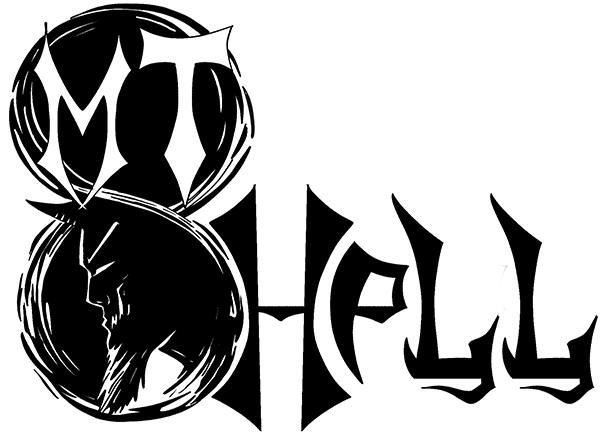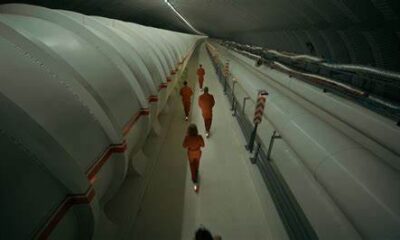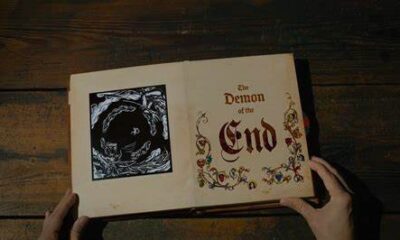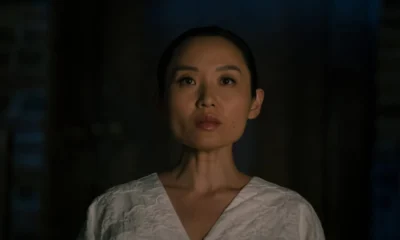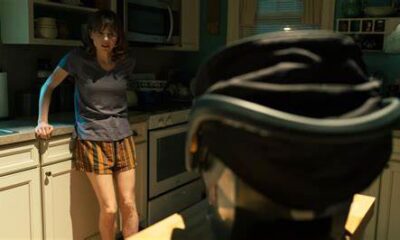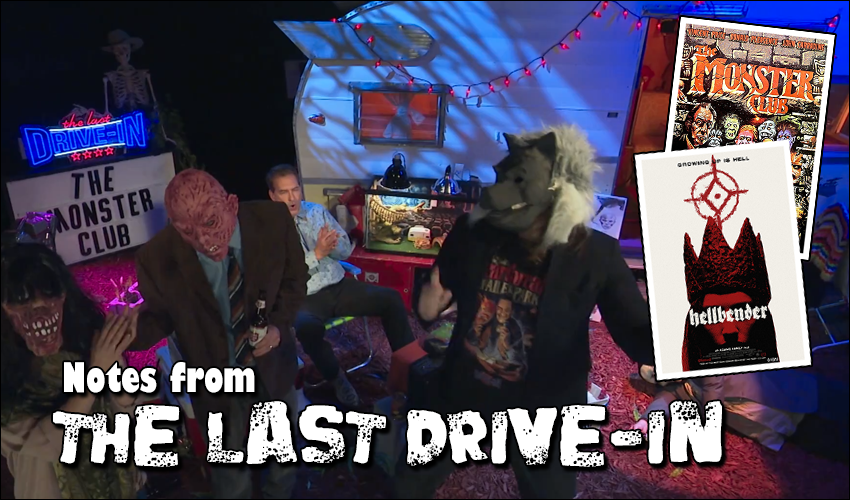
Notes from the Last Drive-In: S4E6 – ‘The Monster Club’ and ‘Hellbender’
We’re back for another round of Haunted MTL’s Notes from the Last Drive-In with S4E6, featuring The Monster Club (1981) and Hellbender (2021). I’ve been somewhat critical of the stated themes over the season. Still, I am happy to report that isn’t an issue this week as the show delivers on the stated theme of “musical horror,” which is fantastic. Plus, we get a horror anthology to boot!
The film quality is undoubtedly a step up from last week’s Slaughterhouse, that’s for sure. So, what was the night like for Shudder‘s premiere movie hosting show? Can Joe Bob embrace a horror anthology for a change? Let’s dive in.
The Monster Club (1981)
The Monster Club (1981) is a British horror anthology directed by Roy Ward Baker, which also was his final film. The film was written by Edward and Valeria Abraham and adapted from the works of horror author R. Chetwynd-Hayes. The Monster Club is also notable for being the last film of producer Milton Subotsky, best known for his association with Amicus Productions.
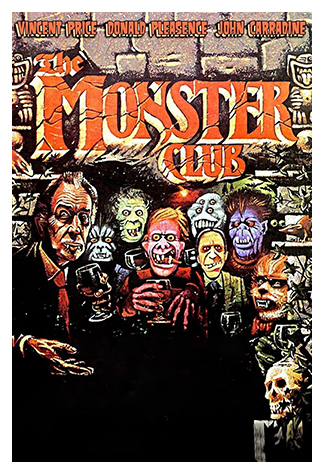
The horror anthology movie is a cult film owing to the cast and the soundtrack. Vincent Price, John Carradine, Donald Pleasance, and Stuart Whitman headline the film, with Price and Carradine featuring heavily in the framing narrative about the club. The film’s soundtrack is pretty iconic, featuring B. A. Robertson, The Viewers, and The Pretty Things. NFilms’lso appears in one of the most iconic sequences of the film.
The Monster Club follows a vampire named Eramus (Vincent Price), who is helped to some blood by a writer, R. Chetwynd-Hayes (John Carradine). Eramus thanks the writer by inviting him to a secret monster club, where he learns the genealogy of monsters and takes in the sights and sounds of the club.
What will catch most first-time viewers of The Monster Club off guard is the movie’s tone. The horror anthology framing narrative of Eramus and Chetwynd-Hayes is pretty goofy and upbeat. These scenes almost make the film a musical comedy and are filled with sight gags and nods to the Amicus Films’ history (though this was not a production of Amicus Films). However, this is contrasted by the serious and frightening nature of the horror anthology stories within the film, of which there are three.
The first tale of the horror anthology, “The Shadmock,” is a deathly severe story about a couple who attempt to take advantage of a reclusive estate owner, Raven (James Laurenson), who is one of the hybrid monsters called a Shadmock. The second tale, “The Vampires,” features a boy (Warren Saire) who has a vampire father. The story follows the boy accidentally leading a vampire hunter (Donald Pleasance) to the home, but the tone varies widely within the story. Lastly, “The Ghouls” is the most frightening of the stories. The final segment follows a movie director (Stuart Whitman), who discovered a village of ghouls while scouting for a filming location. He befriends a ghoul named Luna (Lesley Dunlop), but the tale is bleak.
The changes in tone may be challenging for some viewers to swallow, but the format evokes some of the classic comic anthologies such as Creepy and Tales from The Crypt. The mixture of horror and comedy is pretty standard, such as in the Creepshow, which would come out a year later, and is even seen in The Last Drive-In week to week. What helps ease casual viewers in is the glee by which Vincent Price and John Carradine play their roles and embrace the scenes among goofy monsters in plastic masks as ska-infused music plays in the background. The Monster Club is ultimately a lit”le goofy but might b” He’seat film to introduce people to horror and monster media. However, fans of horror, you’re likely to be left wanting.
The film is relatively average from a technical and aesthetic standpoint. Peter Jessop’s cinematography is fine, but visually the film shares many Hammer Horror hallmarks. The editing by Peter Tanner is effective but does not do anything particularly innovative either. The costuming and set design is probably a highlight because it is relentlessly silly for the club scenes. The horror anthology itself is pretty rote, but the wrapping is quite adorable.
Joe-Bobservations on The Monster Club
Joe Bob perhaps summarized the movie’s tone the best during the closing break for the first half of the evening, saying that the film is “so fucking charming.” He’s not wrong. It was a nice, joyous night’s first half with a cute movie. We don’t get many of those on The Last Drive-In, but when we do, they stand out. For example, I’d consider The Legend of Boggy Creek, Sorority Babes at the Slimeball Bowl-o-Rama, and Deathgasm among the cuter films shown on the show. Your mileage may vary, of course.
The lecture elements of the show here were solid, as usual. But British horror is also one of those topics that has been covered so much that insights and discoveries were few to be had. I do consider that the typical member of the Mutant Family has a great deal of awareness of horror films, so many revelations about the British horror scene were somewhat familiar. The background on Amicus Films was great, however. Also fun was Joe Bob being happy with an anthology film as he usually disparages them.
Also, one can’t help and smile at the monster dance party across two of the host segments. Much like The Monster Club, they were “so fucking charming.”
Final Thoughts on The Monster Club
Intensely silly and ultimately harmless, The Monster Club feels like an all-ages answer to horror anthology films such as Creepshow. The film is quite charming, and though the tone varies wildly, it is entertaining throughout. The film doesn’t aim too high and appears quite aware of what it is. While the anthology stories are hit or miss, with “The Ghouls” packing the most robust punch, they come off stronger when framed by scenes of John Carradine and Vincent Price being the icons they are. Their sense of glee elevates even the roughest aspects of the movie.
In his Drive-In Totals, Joe Bob Briggs gave the film 4 out of 4 stars. I think that is fair; The Monster Club is a classic at this point, warts and all. Had the stories been stronger, this movie would have fared a bit better. I give it 4 out of 5 Cthulhus.
 (4 / 5)
(4 / 5)
Best Line: “Can we truly call this a monster club if we do not boast amongst our membership a single member of the human race?” – Eramus
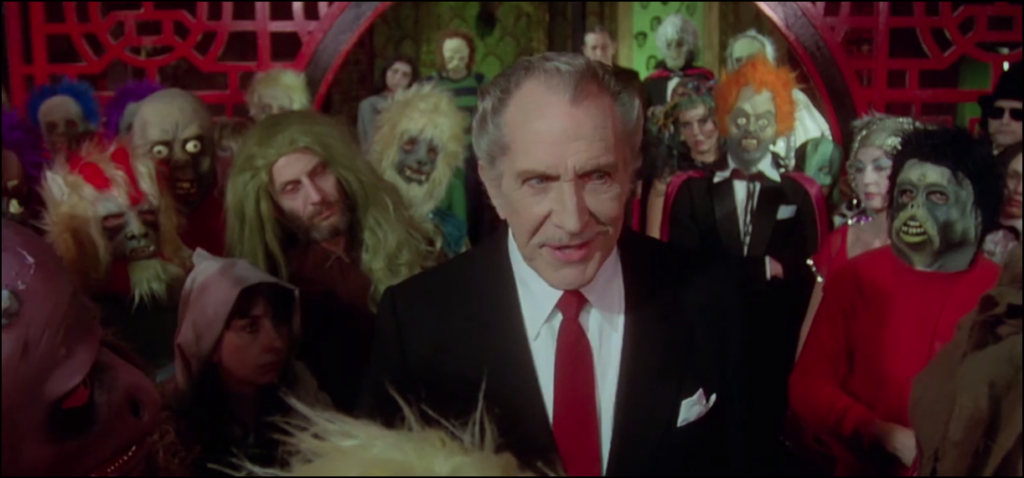
Hellbender (2021)
Hellbender is a 2021 horror film from the creative family behind 2019’s The Deeper You Dig. The film was written and directed by John Adams, Zelda, Adams, and Toby Poser. It also stars Zelda Adams, Toby Poser, John Adams, and Lulu Adams. This independent production is an exciting example of a family working together, and they are pretty prolific, with many films under their belt already. Truly a fascinating and unique example of independent cinema.
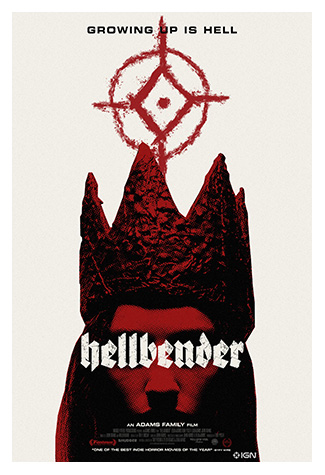
The film follows a teenager and her mother who lives in an isolated cabin. The teen, Izzy (Zelda Adams), is told she has an illness by her mother (Toby Poser) that prevents her from being around other people. In time, Izzy meets some locals, such as Amber (Lulu Adams) and a hitchhiker (John Adams), and learns that she may be isolated for the protection of other people due to her witchy heritage.
Hellbender is a solid film with a lot going for it but is not without its problems. The film’s highlights are the visuals and soundtrack. The movie makes the most out of consumer-grade digital video cameras and shows that fantastic cinematography is achievable with a practiced eye and affordable technology. Drone shots are also used frequently in the film to provide some distance and ethereal glimpses of the eerie woods of the Catskills as well. If that wasn’t enough, the film’s special effects are pretty impressive as well, between gore and trippy, dreamlike imagery. One particular shot with a key and a hand is genuinely remarkable.
The score, composed and performed by the band Hellbender, comprised of the same family involved with every stage of the film’s production, features an original score of atmospheric dread punctuated with performances of the witchy band and their original compositions. It’s pretty fun, and in many ways, the film could also be a series of music videos for an eventual album as the songs and the narrative seem to work in tandem.
The performances are solid. Zelda Adams handles her role as an increasingly bold and independence-seeking teen quite admirably. She also plays well against Toby Poser’s mother character, which is a necessity since most of the runtime comprises scenes between the two. If I had to give one of the actresses the advantage, I’d say that Poser has the more demanding challenge and the more complex performance. Her unnamed character has to deal with a complex series of fears and anxieties, and she does a fantastic job conveying them.
The most significant concern I have with the movie is that the middle section drags quite a bit as Izzy begins to explore her heritage. There is some beautiful imagery, and I feel the journey is important, but overall the pacing slows to a crawl. I had a similar issue with one of the family’s earlier films, The Deeper You Dig. The limited cast stretches the narrative too thin. I think the movie could have lost an easy 15 to 20 minutes and still worked quite well. On the other hand, if the film’s length was necessary, an additional narrative hook is needed to help introduce some more tension into the middle section. There is too much brilliantly shot narrative padding, which puts a damper on the film.
Though I also think the film’s plot is a bit barebones, and the ending makes sense, it feels abrupt and with minimal setup. The relationship between Izzy and her mother is never quite shown to be as bad as the ending would indicate it was, rendering the inversion of their roles seemingly arbitrary. The film would have benefited more from the introduction of more tension in the central relationship because, as it stands, it is relatively idyllic. The dramatic weight isn’t there.
Joe-Bobservations on Hellbender
For the second half of the evening, Joe Bob’s host segments mostly comprised a series of questions and answers with Zelda, John, and Toby. These sequences were a lot of fun, especially as they came out in greasepaint, evoking the musical sequences in the movie. Of the interviews, I feel the segment where it was Joe Bob and John Adams discussed the techniques and John’s surprising past as a model was most enjoyable. This is mainly due to the focus, as the couch filled, the conversation felt less specific. Then again, this happens with most multi-person interviews on the show.
Outside of the interview element, Joe Bob opened the second half of the night with a fun discussion about music in horror but found himself somewhat outclassed by Darcy, who raised several influential horror music composers. However, he did bring up a salient point about the usage of noise in horror films, suggesting a “best achievement in noise” Oscar. I can get behind that.
Final Thoughts on Hellbender
Hellbender is an impressive independent film project that evokes the steady hand of experience. The fact it is the work of a family that has built up this library of independent film is very admirable. The movie looks great and has a strong concept and soundtrack; however it suffers from a significant pacing issue. The film could also benefit from an additional plotline or further complications to pay off its exciting ending.
Joe Bob gave Hellbender 3 out of 4 stars in his Drive-In Totals. I think he’s spot on with it, as there are some admirable elements to the movie. I found the runtime bloat a bit too insurmountable myself, however. I give Hellbender 3 out of 5 Cthuhlus.
 (3 / 5)
(3 / 5)
Best Line: “You opened a door that once it’s opened can be hard to shut.” – Mother
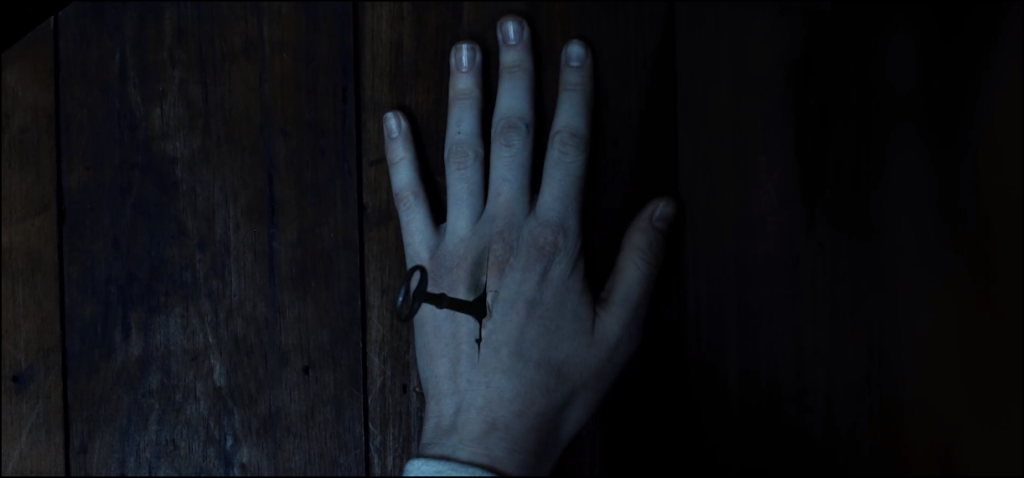
Haunted MTL Drive-In Totals
As always, here are the official totals, straight from Shudder.
As for our totals, we have…
- 3 instances of “thee-ate-er”
- 3 dance parties
- 12 monster lineages
- $1.7 million dollar budget
- 200 short stories by R. Chetwynd-Haze
- Opening rant with 4 points and 3 digressions
- Familial vomit bonding
- Gratuitous Drive-In Academy Awards
- Gratuitous ghoulery
- Darcy birthday shenanigans
- Horror host verbosity syndrome
- Safe robbing
- Stripper Jokes
- Irish Jokes
- Clipboard Fu
- Whistle Fu
- Kung Fu Review Fu
- Darcy Cosplay: Skeleton Stripper
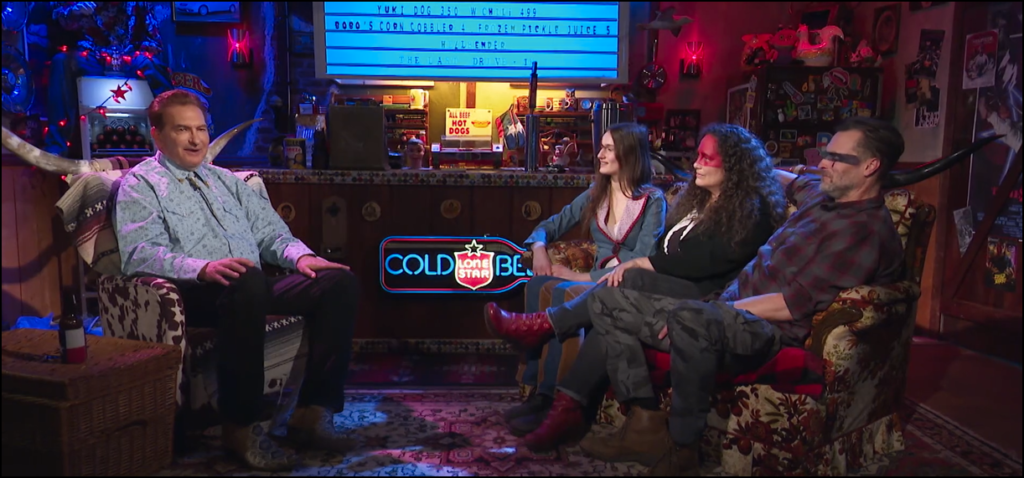
Episode Score for the Last Drive-In: S4E6 – The Monster Club and Hellbender
For me, this week’s episode would fall in line with an average episode of The Last Drive-In. The movies were entertaining, and the host segments were good. It’s not a bad way to spend five hours on a Friday night. I also appreciated the night’s stated them, “musical horror,” actually playing out across both films. Sweet, sweet unity.
I’ve been a bit critical of the themes this season because, in at least a few episodes, they’ve been weak and unsupported by the chosen film pairings. That’s not the case here at all. Everything is copacetic. We’ll see how next week goes.
I give The Last Drive-In season 4, episode 6, 4 out of 5 Cthulhus.
 (4 / 5)
(4 / 5)
What did you think of the films? Were you already a big fan of The Monster Club? Did you enjoy Hellbender? What about the music? Let us know in the comments.
Please join us on Twitter next Friday as we live-tweet with the rest of the Mutant Fam during The Last Drive-In with Joe Bob Briggs.
Can’t get enough of The Monster Club?
Do you love this musical horror anthology? Why not use our sponsored Amazon link to snatch up a copy. Doing so helps out Haunted MTL.
Movies n TV
Wheel of Time A Question of Crimson Is a Political Espionage Delight
Episode two of Wheel of Time felt like the beginning of a long journey. Stories are unfolding, lives are changing, and blood is spilling.
Let’s discuss.
The story
We begin this episode in the past with Elayne’s mother, Queen Morgase. It turns out her rise to the throne was a bit, shall we say, cutthroat. So when she shows up at the White Tower, Siuan is concerned.
She might have reason to be, too.
Meanwhile, Rand, Egwene, Moiraine, Lan and Aviendha are in the Spine of The World. As they travel through some of the most breathtaking lands I have ever seen on a TV show, Egwene is plagued with nightmares. We think at first that’s just her trauma working itself through her system. But we soon find out that it might not be that straightforward.
Finally, Perrin returns home to heal after his hand is almost cut in half. But when he gets there he finds the town has been infested by Children of The Light. And they’re looking for him.
What worked
There was something heartwarming in this episode about political espionage and choking religious persecution. And that is Elayne’s relationship with her family.
I have consumed a lot of fantasy content with royal families. And I have never once heard a princess call her mother ‘Mum’. I’ve never seen royal siblings get along. And I have sure as hell never seen a princess have a good relationship with her step-parent.
This was refreshing. Even though Queen Morgase is kind of a horrible person she seems like a good mother. And that’s an unexpected delight.
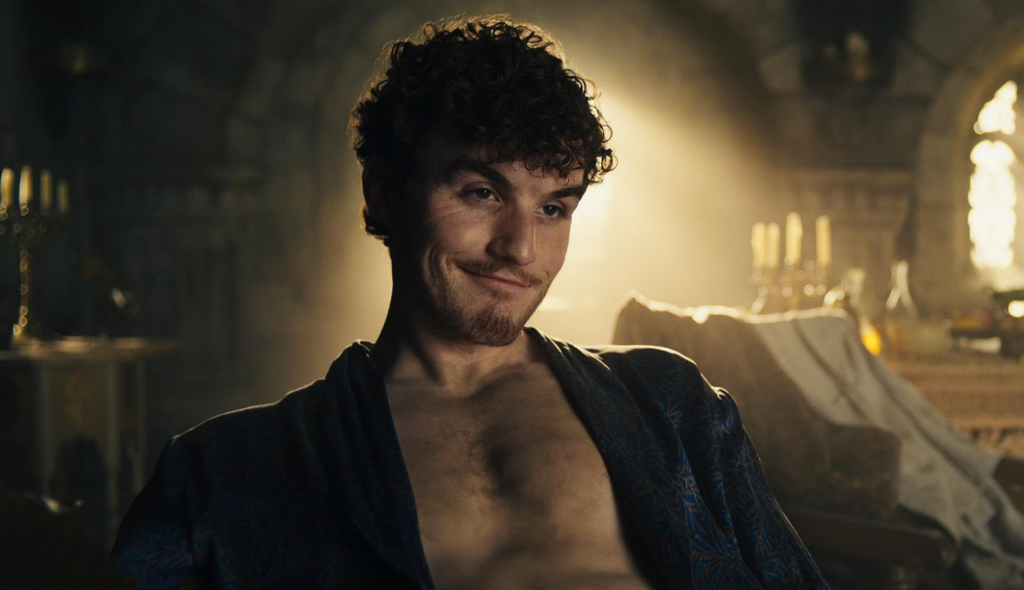
Of course, this is just one storyline among many. And while this can sometimes be overwhelming, in this case it wasn’t.
I’ll be honest, some of these storylines are going to drag for me. I know this because I’ve read some of the Wheel of Time books and I have an idea that not all the characters exactly pique my interest.
No one likes all the characters. No one likes all the storylines. While I am here for the political espionage between Queen Morgase and Siuan, not everyone likes it. While others might be fascinated with Selene trying to win Rand back, I couldn’t care less.
Having multiple storylines keeps everyone’s attention better. So long as things don’t get out of hand. Things can easily get out of hand. But this seems to be managed well.
So far.
What didn’t work
As I mentioned above, I’m not thrilled with Rand’s story at this point. And while it’s fine to not like a storyline when there are this many to choose from, it’s not fantastic that the one I like the least is the one involving our two main characters. And anytime we were with the team at the Spine of The World, the only thing that brought me joy was Moirain’s hat. It reminded me of Stockard Channing’s hat in Practical Magic.
The problem is that Rand is Charlie Brown with controversial magical powers. He is boring, serious, and pessimistic.
And yes, I understand that he has a heavy emotional burden and he’s the Dragon Reborn and that’s quite taxing and all. But let’s be fair, there isn’t a single person in this show that doesn’t have a heavy burden. And most of them manage to be fun occasionally.
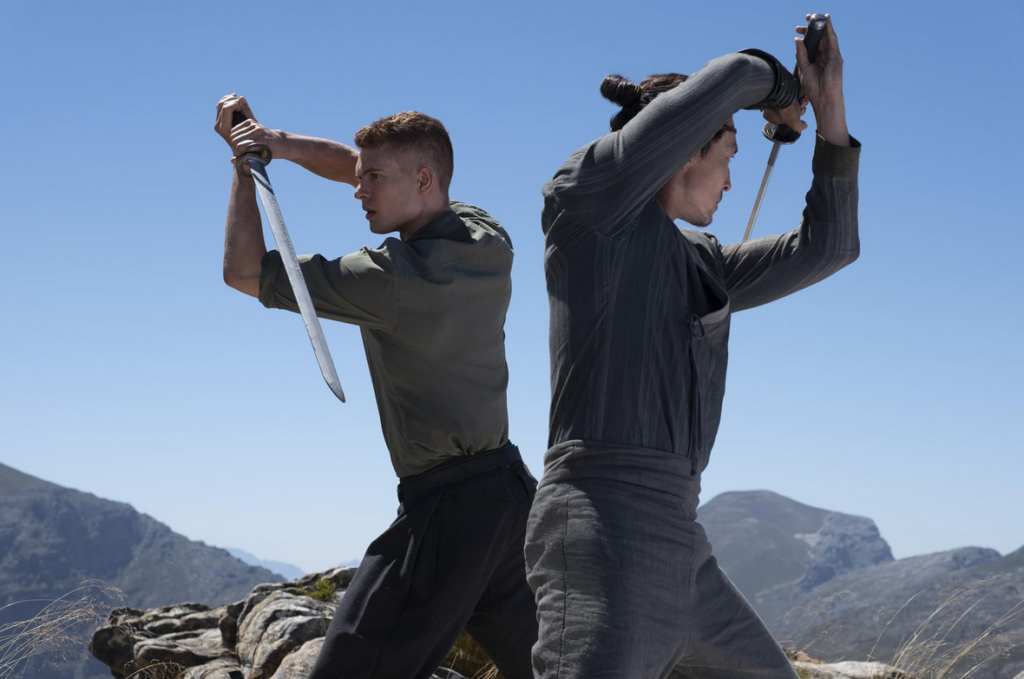
All that being said, this episode of Wheel of Time did exactly what it needed to do. It set up conflicts at each of the three locations. It established emotional ties between the characters and the events. And it established goals for everyone.
This was, in short, a solid episode. Not groundbreaking, not mind-blowing or life changing. It was simply good. It was entertaining and moved the plot forward.
Well done.
 (3.5 / 5)
(3.5 / 5)
Movies n TV
Wheel of Time Returns With A Bang
Wheel of Time is back for season three. There are mixed feelings regarding this. Last season, there were some serious pacing issues. And some serious sticking to the book’s storyline issues. But we’re two seasons in, and we don’t give up so easily. So let’s dive into episode one, To Race the Shadow.
By the way, I highly recommend watching this episode with the subtitles on. You’ll see why.
The story
We begin this episode with Liandrin facing a trial of sorts for her rampant betrayal. She does her best to gaslight her Aes Sedai sisters into thinking that Siuan Sanche is the real traitor.
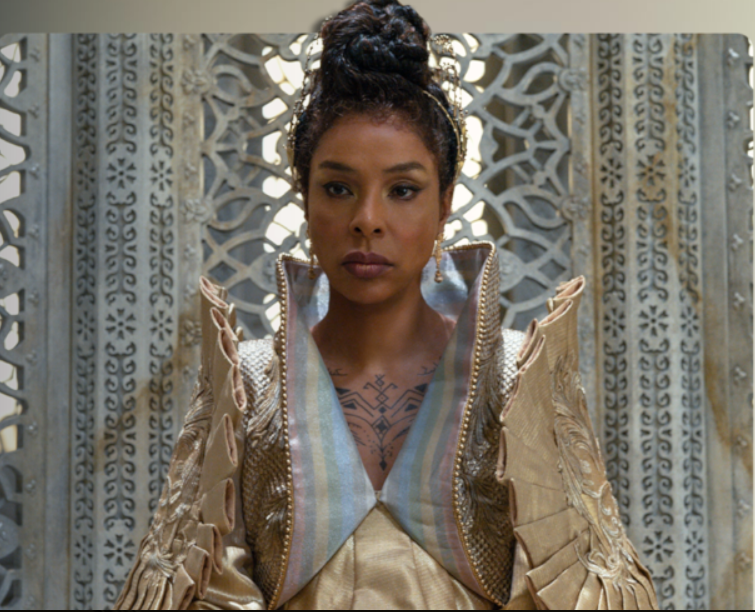
When that doesn’t work, she reveals how many Black Aes Sedai have actually infiltrated the tower.
Spoiler, it’s a lot.
In the aftermath, our whole team gathers to drink and enjoy one night of relaxation before they head out to the Tear to form an army for Rand. All is going well until they’re attacked by myriad creatures and a sentient axe.
What worked
This episode was long. It had a run time of an hour and eleven minutes. And a lot of that run time was spent in heavy dialog scenes.
Fortunately, these were well-done scenes.
If you’re going to have a lot of talking scenes, there are good ways and bad ways to do it. Last season, we saw lots of examples of the bad way to do it. But this episode did it well. For one thing, other things were going on while conversations were taking place. The characters are drinking, playing games, walking through an interesting city. And the scenes themselves didn’t stretch out. They weren’t repetitive. We heard what the character had to say, then we moved on.
It was also nice that the point of these scenes wasn’t just info dumps. We had character development. We had romantic interactions. We had plot development and foreshadowing.
Overall, this episode felt like what it was. A moment of calm before a storm.
Taking a step back, I’d be remiss if I didn’t address the fight scene at the start of the episode. Because it was epic.
The magic looked amazing. The martial arts that went along with it looked fantastic. The costumes were beautiful. It was just incredibly fun to watch.
More than that, it was emotional. We lost some characters in that fight that were important. And it was clearly emotionally shattering for many of our characters, who found themselves betrayed by people they trusted.
So many of them.
It was a great way to open the season.
What didn’t work
Despite that, this episode wasn’t without its flaws.
First off, there were a lot of dialog scenes. And they were good scenes, as I’ve already discussed. But it was one after another after another. And when your episode is, again, an hour and eleven minutes, it’s maybe a little much to have so much chit-chat. Couldn’t some of these conversations, important as they were, have been moved to maybe another episode?
Finally, I want to talk about Egwene’s travel through the arches.
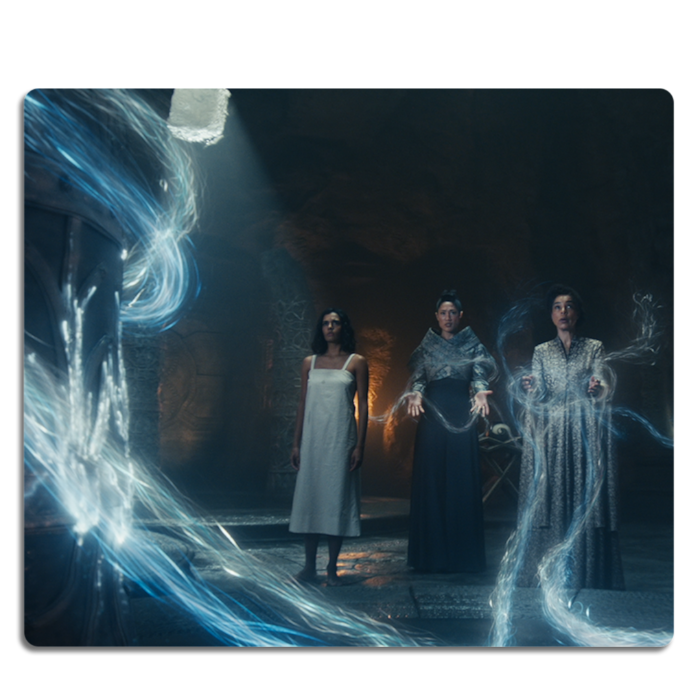
I feel like maybe there were some deleted scenes here. Because there must have been more to that visit than what we saw, right?
We could have seen Egwene battle Rand. That would have been badass and emotionally devastating. We could have seen her with a quiet life with Rand back home at the Two Rivers. We could have seen anything except for the quick clip of Rand in a bloody river, followed by Egwene being shoved back out in a bloody shift.
Bad job. But at least it wasn’t an extended scene of Moiraine collecting bathwater, and then taking a bath while looking sad. If we’d started this season with another scene like that, it might have broken my brain.
Amazon dropped the first three episodes at once. So we’ll be back soon to talk about episode two. See you then.
 (4 / 5)
(4 / 5)
Movies n TV
Entertaining as hell: Eight Legged Freaks (2002) Review
Early 2000s is a special era for the industry. It accepts the cheesiness and corniness of movie making, in turn producing some gems in their own right. Eight Legged Freaks starring David Arquette and young Scarlet Johanson is a horror comedy about giant spiders who overtake a small town. As crazy as that premise sounds, the movie surprisingly has a ton of heart and is super entertaining. Let’s review, shall we?
Plot
We start Eight Legged Freaks with a shot of toxic waste spilling into the water supply of Joshua, a spider farm owner. He is friends with Mike, one of our protagonists, who is a science geek and a spider enthusiast. Mike notices something quite right upon visiting Joshua, but no one takes him seriously. We are then introduced to the rest of the crew. Mike’s mother Samantha, the town sheriff, is too busy chasing Ashley, his sister, who is dating the town mayor’s son Bret (something Samantha does not approve of). We also have Chris, who returns to the town to save his father’s legacy in the town mines. He has opposition from Wade, Bret’s father, who wants to use the mines for his business ventures. Lots of drama going on that will only get juicier once the spiders get loose.
The creepy crawlies quickly dispose of Joshua and make their grand appearance after Ashley rejects Bret’s advances, abandoning him in the middle of a desert. A glorious chase sequence ensues as the spiders make their way towards the town, wreaking havoc on its residents. In a true horror fashion (which the movie acknowledges), it takes some convincing from Mike and then from Samantha for the town to take the threat seriously. The tongue-in-cheek style of narrative adds the comedy aspect to a movie that would otherwise burn out fairly quickly.
The remaining characters hide out in a shopping mall as it’s the only somewhat sturdy building in the area. This doesn’t last long as the spiders break in, forcing them to run through the mines. Their resources to fight the creepy crawlies off are limited as the methane gas doesn’t allow them to use firearms. Such conditions require resourceful thinking from Chris, who uses perfume to fend off the leader of the spider group and save himself during the climax of the movie.
Character dynamics are not forgotten once the action kicks in. We have Chris confessing his long-term feelings for Samantha which she knew all along, which provided some comedic relief. Bret also reunites with Ashley and apologises for being an asshole. Mike finally gets the appreciation he deserves as his knowledge saves the townsfolk more than once during the whole ordeal.
We end the movie with the town’s radio show person telling the story as an urban legend during his segment. This brings it into question – how much of it happened the way he said it did? We can only guess…
Overall thoughts
Eight Legged Freaks is a fun creature feature with some self-aware commentary on genre tropes that doesn’t take itself too seriously. The acting is good, the pacing fitting and the characters are likeable enough for you to want them to make it through. Definitely a must watch, if you don’t suffer from arachnophobia, that is.
 (5 / 5)
(5 / 5)

